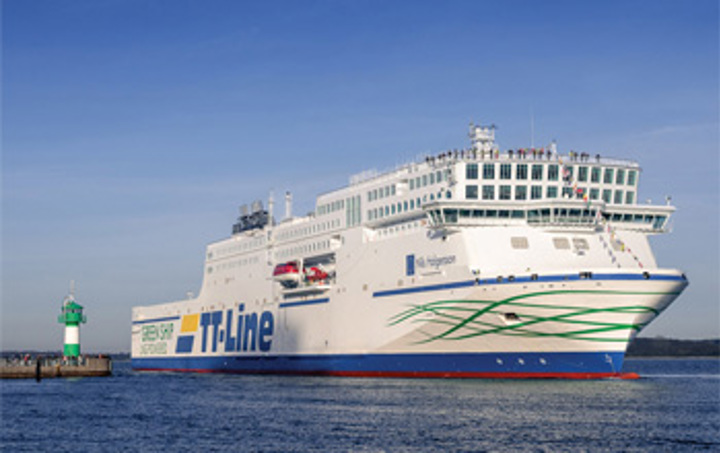Electric Vehicle Charging Points
Charge the battery of your electric vehicle during your crossing

The next major step towards sustainable travel
As the first vessels in the TT-Line fleet, our Green Ships are equipped with 32 EV charging points. We want to contribute to the future development of electric car usage and offer our customers the best possible service.
Come on board our Green Ships and charge the battery of your e-car during the crossing.
We have two different types of charging points on board our Green Ships.
At which charging point your electric vehicle will be charged during your crossing depends on the capacity and availability of your departure. Our crew is responsible for the allocation. The plugs of both charging stations are compatible with all connectors of the electric vehicles.
Frequently asked questions
-
How much will the battery of my E-Car be charged at the end of the crossing?
Generally, you can assume, that you will leave the ferry with a fully charged battery upon arrival.
However, the battery charge may vary depending on the duration of your crossing, the battery size and the initial battery level.
-
How can I book battery charging for my electric vehicle?
You can easily book battery charging in the online booking dialogue by yourself.
At first, please select 'Electric vehicle', when entering travellers and vehicles. In the following steps you can add 'Power' to your booking.
-
Do I get a fixed parking space on board?
You will be assigned to a fixed parking space at a charging station by our deck staff. Your electric vehicle remains parked there during the entire crossing.
-
What shall I pay attention to at the port terminal?
Please print out the indication label, that you received with your booking confirmation, and place it clearly visible in the windscreen of your car.
After you have passed the Check-in, follow the directions to the correct ferry port. Your boarding card will tell you the correct pier and the lane you should be in. Please stick to it.
-
E-Car safety on board
Statement TT-Line
In view of the growing number of vehicles with alternative drives, we take the daily handling of these and the associated safety on board very seriously.
In accordance with the TT-Line Conditions of Carriage, we only transport vehicles that are approved for road traffic in accordance with the relevant guidelines. In this regard, the same high requirements apply to electric vehicles as to conventional vehicles.
Cargo and vehicle fires are critical situations on board any vessel. To minimize the effects of a fire, safety measures are therefore taken that are tailored to the particular cargo. According to current studies and research, the likelihood of an electric vehicle fire is equal to or less than that of an internal combustion engine vehicle. The release of energy is also the same in both cases.
On-board firefighting measures are in line with the state of the art as well as recommendations for dealing with alternatively powered vehicles in particular. These are permanently audited in close cooperation with the responsible classification society and the flag state. New findings are adapted, implemented and incorporated into crew training. All crew members have special training in fire fighting.
The electrical installation and safety systems on board are regularly checked in accordance with international regulations.
TT-Line supports electromobility by offering the option of transporting electric cars on board, thereby also adapting to the rapidly growing demand. With the new Green Ships, TT Line sets a new standard in sustainable transport and offers the possibility of charging electric vehicles during the crossing. Numerous charging stations are available for this purpose on the loading decks of the Green Ships Nils Holgersson and Peter Pan. When using the charging stations, passengers are informed in advance in the booking dialog about safety instructions and special information for using the charging stations.

Since 60 years, we have been thinking innovatively and acting responsibly and sustainably.
And we will continue to steer with full speed ahead.
We invest in a sustainable future!

TT-Line is the first shipping company, and a pioneer in the southern Baltic Sea, to use LNG for its new Green Ships. These forward-looking ferries will be the most environmentally friendly ferries in the company's history and on the Baltic Sea.

